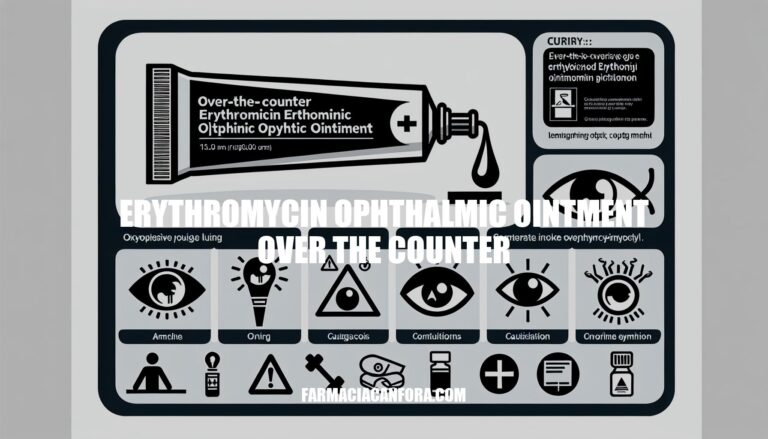


Erythromycin ophthalmic ointment is a prescription antibiotic used to treat bacterial eye infections, such as conjunctivitis (pink eye) and keratitis. It’s also commonly used to prevent eye infections in newborns. This ointment works by stopping the growth of bacteria. It’s generally well-tolerated with few side effects, but it is not available over the counter and requires a doctor’s prescription.
Erythromycin ophthalmic ointment is primarily used to treat bacterial eye infections such as conjunctivitis (pink eye) and bacterial keratitis. It is also used to prevent bacterial infections in newborns, particularly neonatal conjunctivitis caused by bacteria like Chlamydia trachomatis and Neisseria gonorrhoeae.
Benefits:
Erythromycin ophthalmic ointment is effective and widely used due to its targeted action and safety profile, especially in vulnerable populations like newborns.
Erythromycin ophthalmic ointment is not available over the counter; it requires a doctor’s prescription. You can purchase it at most pharmacies with a valid prescription. There are no over-the-counter options for this medication due to its specific use in treating bacterial eye infections and the need for professional medical guidance.
Here are the detailed application and dosage instructions for erythromycin ophthalmic ointment:
Preparation:
Application:
Post-Application:
Dosage:
Missed Dose:
Storage:
Completion:
If symptoms worsen or new symptoms appear, contact your doctor immediately.
Erythromycin ophthalmic ointment is not available over-the-counter (OTC) and requires a doctor’s prescription due to its specific use in treating bacterial eye infections.
It’s a broad-spectrum antibiotic effective against various Gram-positive and some Gram-negative bacteria, making it essential for preventing neonatal conjunctivitis and treating conditions like conjunctivitis and keratitis.
The ointment is applied directly to the affected area, reducing systemic side effects and promoting targeted action. Its safety profile and effectiveness make it a crucial medication in vulnerable populations like newborns.
However, it’s essential to follow proper application and dosage instructions, as well as take necessary precautions to avoid potential side effects and interactions with other medications.